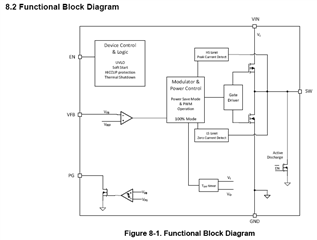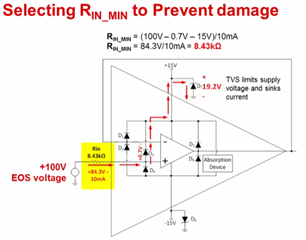I would like to know if the TPS62A01A has the ability to sink current when an external source raises the voltage of the power supply rail. In particular, I have this question in relation to ESD events that get clamped to the power supply rail through the steering diodes of the IC getting zapped with ESD. In looking at the block diagram of the TPS62A01A, it looks like there is a low-side MOSFET that can be turned on to sink current from the inductor. Here is the block diagram:

If this is true, it seems the TPS62A01A could react to the rising voltage and keep it in check. But is the speed of the ESD event too fast for the TPS62A01A to compensate? Or does all of the capacitance on the power supply rail slow down the rise, allowing enough time for the TPS62A01A to keep the voltage from rising?
Regards,
Greg


